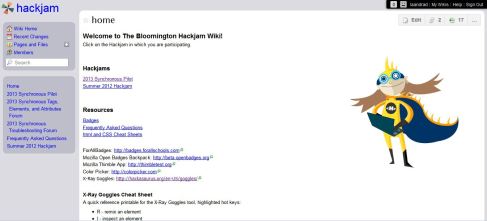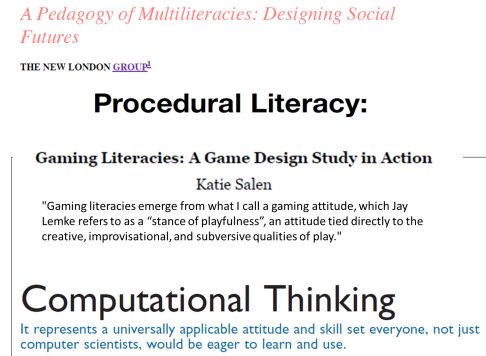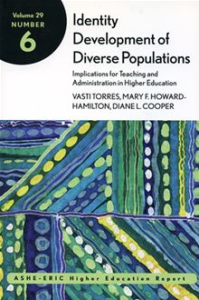At the beginning of the course we planned on working together in designing a Hackjam for adolescents to take place in June 2013. The goal was to come up with a user-oriented curriculum to teach writing and web designing skills with a potentially controversial ingredient, ‘hacking.’ The work went under several iterations in which our original design, as well as our understanding of what hacking really implies, developed and transformed. The process underwent several stages, from gathering evidence from a variety of users, a collaborative curriculum redesign, a pilot with our peers, and final considerations for the session. In the following lines we expand a little bit about these stages that illustrate our development of the Hackjam curriculum.
The first Hackjam was a success, so we were building on curriculum that was already good. Thirty 13 to 20-year-old adolescents participated in this six-hour jam in 2012. Participants used Mozilla’s X-Ray Goggles to alter and modify the HTML and CSS content of the Herald Times website and create their own stories. They created superheroes and supervillains who were then placed into the news stories as the young hackers remixed the content. But we were aware there was room for improvement. By the end of the six hour day in 2012, the students were tired and felt like they were doing redundant work. We have redesigned the curriculum to avoid this.

In March we sent along a survey to participants of 2012 Hackjam to learn more about what they liked about the Hackjam and what they felt could improve. In addition, we also interviewed Phil Carspecken, a faculty in Inquiry Methodology program, for a fresh, extreme perspective on the matter. The survey included questions asking their opinions on the Hackjam and what they wouldlike to see if they came to the Hackjam again. While only three people responded, it was clear that adolescents enjoyed the experience overall, and they especially liked creating their personal wikis. However, they were a bit disappointed when they realized that their modified webpages did not actually change to original website but were stored in a Mozilla server. They commented they were excited about the possibility of making a real transformation, but had fun “legally” hacking a webpage with X-ray Goggles.

During the interview with Phil Carspecken, he expressed this disappointment as well when we explained to him that this tool did not change the actual content of a website. He was joking about being able to change his own bank account, but the idea of making a real transformation was what seemed to be important when it comes to hacking. Phil liked the civic implications to teach children the idea of ‘hacking’ as a way to engage in deconstructing the form of the messages we receive from the media. In this way, children are able to critically explore the relationship between form and content, and how content helps shape the content we consume. Finally, he pointed out for us some readings about critical pedagogy that would help us in understanding more about this orientation. With these ideas in our minds, we took our backpacks and headed to Bloominglabs to collect some field-work data about a real hacking site from the Maker movement.
Bloominglabs is located in a non-residential neighborhood so that attendants to its meetings can be noisy if their projects would require so. Inside its doors, an amazing wide range of hands-on activities take place; there is a livng room at the entrance where some people work on their laptops to create projects or chat about them; in an adjacent room there is a tools workshop with heavy equipment, an electric saw, a lathe machine, and a variety of carpentry tools. In a room to the right after the entrance, a lot of electronic components where lying on a big table. Some robotic projects for a local school were taking shape. Interestingly, participants of these diverse, hands-on eclectic projects were mostly socializing and intermittently worked pushing forward their designs. We learned that we would need to entertain a new meaning of the word ‘hacking,’ and we started to realize that the maker movement has retained a broader meaning of the word. An electrifying inspiration energized our quest, and we set off to design a redesign the 2013 Summer Hackjam.

The Hackjam curriculum is a pedagogical plan for a six-hour hands-on experience in which adolescents engage in writing literacies as a product of learning about HTML and CSS design. Our learning goals are aligned with the Common Core Standards for writing and New Media Literacies. We came up with eight different activities, which included an icebreaker, setting up wiki pages, using the X-Ray goggles, developing a superhero or supervillain, hacking the Herald Times, and sharing their hacks. A wiki website was set up (http://hackjam.wikispaces.com/) that centralizes all the activities and resources that we put into the curriculum.

Because we intended to create a bottom-up learning experience in which children learned within a community of practice, we thought of adding up two participatory elements that would stir children practices. First, we wanted children to be able to write about how they were doing what they were learning of HTML by using the goggles on a shared space in which other participants would benefit of this pool of knowledge. A forum was conceived of as a place in which children could provide their insights, questions, and answers to each other’s questions. Young hackers are then encouraged to explore a platform that would support this participatory structure – we thought of including a digital badge and points system. For this particular iteration, we found that Youtopia.com could fit our interests well.
Youtopia is a site in which participants participate in challenges, which are further divided into activities. Participants apply for points and badges as they complete these activities. For the Hackjam curriculum, we designed a set of activities for which participants would apply for points. Participants would receive different amount of points if they participated in the forum with small pieces of know-hows, if they commented that they used each other’s pieces of information, if they ask questions on the forum, if they answer questions, and if they got other participants to endorse their forum posts as valuable. With this curricular structure in place, we decided to carry out a pilot session, a mini-hackjam with graduate students in a safe space in which we could try out these ideas.

Three of our classmates joined the one-hour pilot hackjam, and evidence of this experience is accessible here (http://hackjam.wikispaces.com/2013+Synchronous+Pilot). Participants followed a 17-step-by-step direction on how to complete the hack, which included reflecting about what hacking is, installing the X-ray goggles, trying the goggles in whatever webpage they would like, participate in the forums, apply for points and badges, publish their hacks on their wikis, and leaving us their comments on this experience. It was time to reflect on what we had designed, and planned for a new iteration of the curriculum in which we could bring about this new source of feedback.

First and foremost, the evidence was clear, forums, wikis, points, badges; all at the same time, they were overwhelming. Participants barely kept up the pace of understanding what they were learning, how they were supposed to share it, and how to participate of the competition. A simplified experience is called for. We are thinking of changing the approach to the forum and including comment features around the wikis to keep the activities and shared, participatory pool of knowledge tied to the artifacts. Still, we are undecided on how to promote participation with the Youtopia point structure, and we have our concerns on how much we are distracting children from their learning by gamifying the written reflections. We conceived of two possible outcomes, may be that children are encouraged by earning points to participate and an explosion of otherwise not possible interaction of such quantity and quality takes place, or participants may focus too much on earning points that it ends up undermining their learning. We think that a modest amount of external motivation would be required because we know by our previous experience that children are motivated to dig deep into their hacks.
As we move forward and continue to refine our design of the Hackjam, we will take all that we have learned in this class and through our interviews and pilot into account. We have gleaned a lot of valuable information this semester that will directly influence the final design. While the activities are more streamlined now, we still have work to do regarding the points and badges, and in finalizing the forum activity. This process has brought to light many valuable insights about how to design the best learning space for youth while making learning fun and exciting. You can view our step-by-step process in our designer’s workbook (https://docs.google.com/presentation/d/15C0OCZh8DmamSb5Iz_3J5FaFlIncCUcL661wJ1MEYeA/edit?usp=sharing). This was a valuable experience and we feel our project is better for it.












